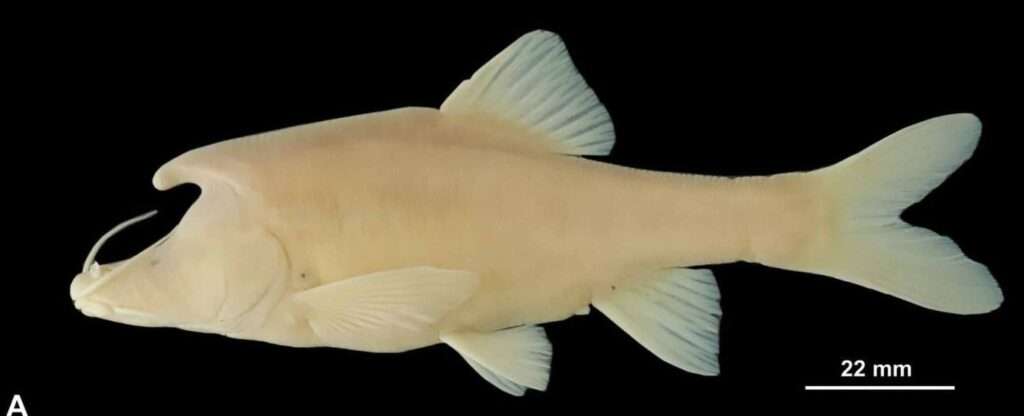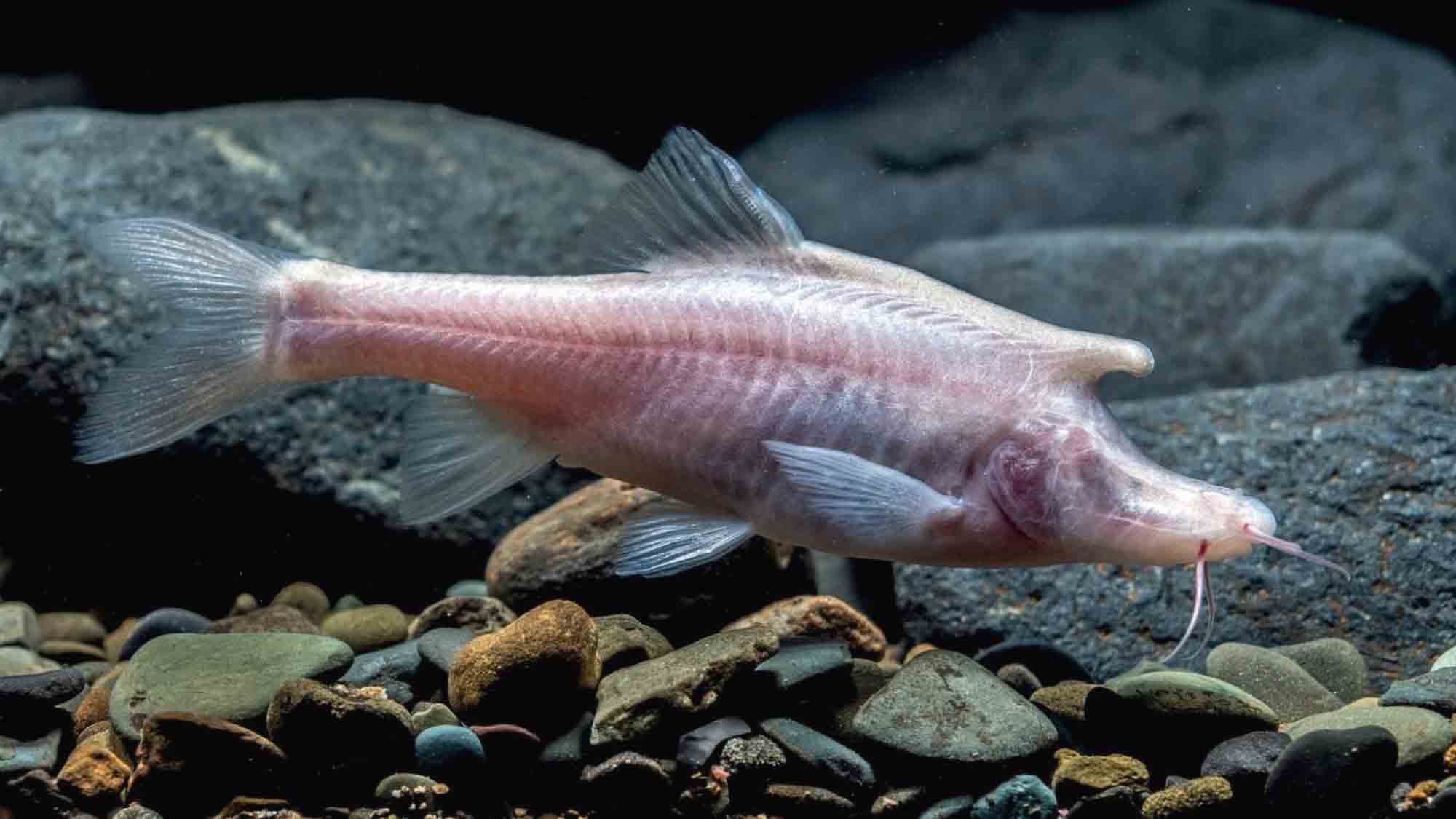A new species of fish which does not have eyes or scales but does have a unicorn-like horn protruding from its head has been discovered in a Chinese cave.
The blind fish that also does not have any pigmentation this in the pitch black environment of the cave in China’s mountainous south-west Guizhou province.
The amazed scientists that discovered the fish, which measures between 4.1 to 5.7 inches long, have named it Sinocyclocheilus longicornus.
The fish’s name is meant to reflect the fact that it has a unicorn-like protuberance where longus means “long” in Latin, while cornu means “horn of the forehead.”
Although it has no eyes, the fish manages to know what’s going on in its immediate environment by using two incredibly sensitive pair of barbels that can be used not just to detect movement but also can be used to taste and feel.

They are most commonly found on fish that live in the bottom of a pond that have little light or indeed in places with no light at all such as deep sea or indeed caves.
One of the incredible things about this is that the entire known population is living in one tiny pitch-black pool no larger than a kitchen table.
There are 76 known species of Sinocyclocheilus, most of which share similar characteristics with the newfound species, although none of them have a horn like this specimen.
But they do have reduced or no vision, a lack of scales and no pigmentation.
The process in which advance physical characteristics such as eyesight vanish because they no longer have a purpose is known as “regressive evolution”.
The scientific team said they had taken the samples of the fish expecting them to be one of the known species and were stunned when they found it was something completely new.
A DNA test and a physical comparison quickly confirmed however that they were unique.
The discovery was published in the peer-reviewed journal ZooKeys on 17th January.
The scientists said they are now trying to work out what the purposes of the horn-like structure.
In their paper they said: “As light-dwelling species do not have horns, these appendages likely have something to do with living in the dark, but it is not clear what their purpose is, the researchers wrote in the paper.”
To find out more about the author, editor or agency that supplied this story – please click below.
Story By: Michael Leidig, Sub-Editor: Angjela Trajkovska, Agency: Asia Wire Report
The Ananova page is created by and dedicated to professional, independent freelance journalists. It is a place for us to showcase our work. When our news is sold to our media partners, we will include the link here.




